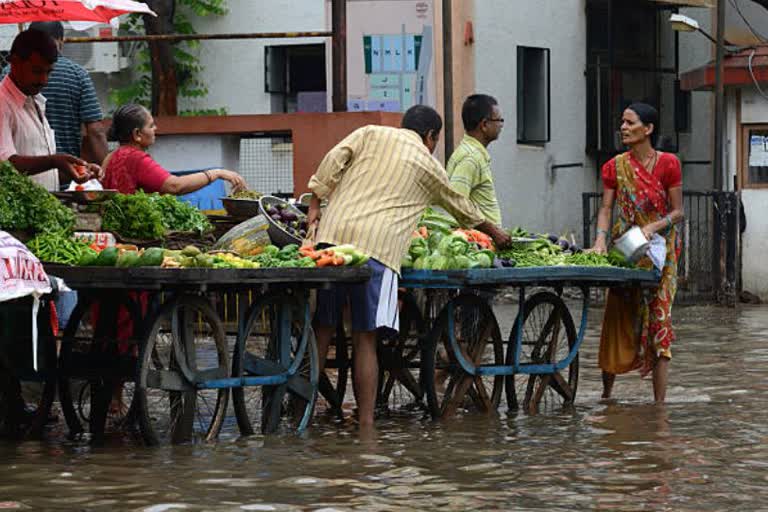Business Desk, ETV Bharat: With various Indian states struggling with floods triggered by heavy rains in the past few weeks, economists now fear that the country’s already-high retail inflation may further rise in coming months as supply chains get disrupted nationwide.
India’s retail inflation, as measured by the Consumer Price Index (CPI), stood at 6.93% in July, mainly driven by rising food prices. A continuous increase in vegetable prices amid heavy rainfall and localised lockdowns is likely to further push up food inflation in August.
States like Bihar, Assam, Arunachal Pradesh have been severely affected by floods this season, while Maharashtra, Karnataka and Rajasthan have seen some of their key cities getting impacted. According to a flood situation report dated 12 August by the ministry of home affairs’ disaster management division, 868 people have lost their lives to floods in 11 states so far this year.
The economic consequences are starting to show as well. National capital Delhi saw a sharp jump in prices of vegetables this week, news agency IANS reported on Friday. Onions are now selling for over Rs 30 per kg in the city compared with Rs 20 earlier, while tomato and potato prices have also shot up significantly.
Tea prices across the country are also seeing a sharp uptick as floods in north-eastern and southern India have not just disrupted supply but hit production, too. According to reports, tea output in Assam and West Bengal fell 30% year-on-year in January-July due to lockdown and heavy rains. Consequently, prices in tea auctions across the country jumped to record levels after years of stagnation.
Rice export prices in India also edged higher this week, according to a Reuters report, as floods and surging coronavirus cases hammered supply and export logistics.
Read more:Covid-19: All appeals under GST, Excise & Customs Act to be held through video conference
Sakshi Gupta, economist, Treasury, HDFC Bank Ltd, said: “Supply disruptions have led to a spike in food inflation in recent months. Though we expect food-related inflation to cool off in the coming months as kharif produce hits the market and supply disruptions ease, uneven spatial distribution of rainfall with floods in certain parts of the country could damage crops and increase the risk of higher food inflation prints, even in the second half of the year.”
“This could mean that retail inflation remains close to 6% in subsequent months and limits the space for further rate cuts by RBI (Reserve Bank of India). In our base case, we expect inflation to print close to 6% over the next two months,” she added.
Madhavi Arora, lead economist at Edelweiss Securities, also pointed that the recent inflation numbers do not “adequately reflect the depth of sluggish demand dynamics” in the economy and have been on the higher side mostly due to supply disruptions, which could further worsen after the floods.
“The adverse supply shocks and statistical imputations have artificially uplifted retail inflation, including core. The recent floods will further aggravate these shocks. We now see inflation hovering above 6% in the near term, and averaging approximately over 5.5% in FY21,” Arora said.
Earlier this month, all six members of the RBI’s monetary policy committee (MPC) decided to keep the benchmark policy rate unchanged after CPI inflation breached the upper tolerance level of 6% for two consecutive months.
Interestingly, in what looked like an anticipation of further inflationary pressure on prices, RBI governor Shaktikanta Das said in his monetary policy statement: “Though there is headroom for further monetary policy action, at this juncture it is important to keep our arsenal dry and use it judiciously.”



